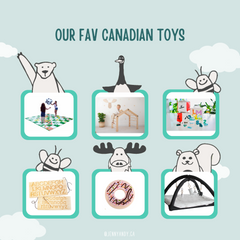Did you know that all screen printing is still done by hand? Yes, there has been some evolution of the silk screening process since its inception however; it is still very much considered a manual process. Especially when compared to today’s technological era.
Most Jenny & Andy products are screen printed. We wanted to learn about the process and in particular about the ink used. So we visited our local facility that we use to print our bath towels, wash cloths, plush rattle cubes, and crinkle toys. Check out the video of them printing on a t-shirt below:
Now to delve further into the process, we are going look at the types of ink used in screen printing. There are 2 main categories of ink that are used: plastisol ink and water-based ink. For many years, plastisol inks were the most common choice for screen printing garments. Plastisol inks were the preferred choice over water-based ink mainly because water-based ink tends to dry up faster making them harder to store and keep in stock. Unfortunately, it's not the most sustainable or eco-friendly option. Plastisol requires a lot more chemicals for cleanup and contain PVC and phthalates which are harmful to the environment. This is why we have always opted to use water-based ink on our products. Using water-based ink is definitely a step towards improving the health of our communities and planet by reducing the negative impact that regular plastisol ink has. Water-based ink, while not completely free of plastic, is mostly water-soluble. Water-based ink is defined as ink which uses water as a solvent base to carry the pigment. During cleanup after printing, you don’t need any harsh chemicals to remove the ink from the screen as you would with plastisol ink. So when it comes to more eco-friendly printing, water-based inks come out ahead of plastisol inks. It's important to note that water-based printing is usually more expensive (in terms of the cost of ink, effort, and time required) compared to using plastisol, but when it comes to moving towards more sustainable practices to help preserve our planet, we think it's worth it. As a conscious consumer, you can feel good about the fact that every time you reach for one of our toys, you are reducing the amount of plastic in landfills and minimizing your ecological footprint. At Jenny & Andy, we always aim for sustainable practices every step of the way, which is why we insist on making our products as eco-friendly as possible, even when it comes down to the ink we use. Being conscious about the ink we use may seem small, but any step in the right direction is a step towards a better future. Plastisol Ink
Water-based ink
Do good, feel good
Check out some of our products
What's in the INK?







